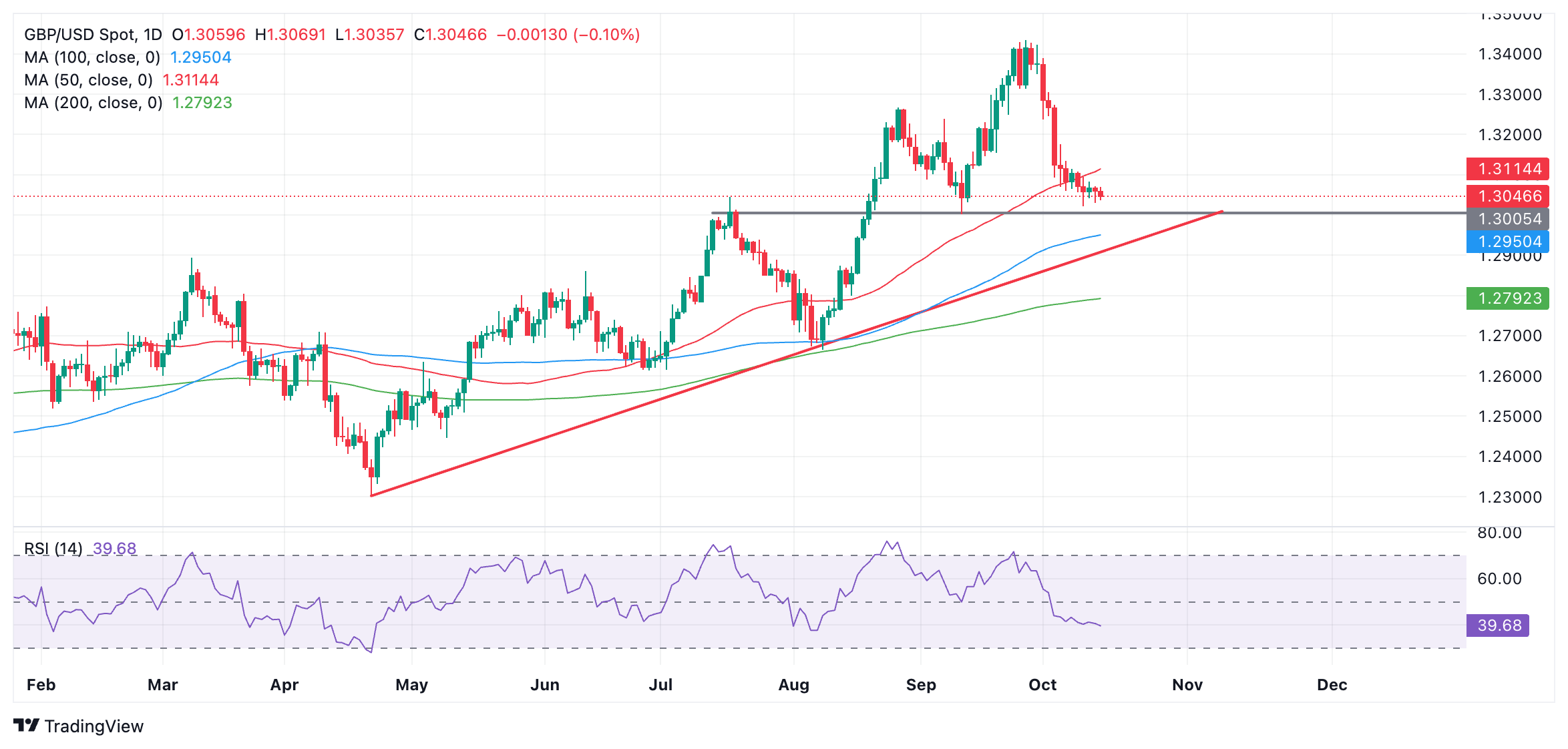GBP/USD falls closer to 1.3000 psychological level on USD strength
- GBP/USD edges close to the 1.3000 line in the sand on USD strength.
- The US Dollar strengthens as markets continue dialing back bets of aggressive interest-rate cuts by the Fed.
- The Pound Sterling, however, finds a foothold from strong UK employment data.
GBP/USD edges lower into the 1.3040s on Tuesday as a result of continued US Dollar (USD) strength, which comes from reduced bets the US Federal Reserve (Fed) will need to be as aggressive at slashing interest rates as previously thought.
The US economy is holding up better than expected and from once fearing a hard landing, or recession, passengers on the US enterprise are entertaining the possibility of “no-landing”. This suggests policymakers will not need to reduce interest rates as sharply as anticipated to stimulate the economy. The expectation that interest rates will remain elevated swells foreign capital inflows, which, in turn, increases demand for USD.
GBP/USD fails to rise on positive UK jobs data
GBP/USD is sliding lower despite just-released UK jobs data coming out relatively positive – something which would normally have been expected to strengthen the Pound Sterling (GBP) and elevate the Cable.
The Unemployment Rate fell to 4.0% in the three months to August from 4.1% in the previous three months, and beat expectations of the same (4.1%). The Employment Change showed a 373K rise over the same period from 265K previously, and average earnings rose in line with expectations. The only data point to cause concern was the September Claimant Count, which rose to 27.9K from 23.7K in August, and beat expectations of 20.2K.
Cable movers on the calendar
GBP/USD’s main market-moving events on Tuesday are likely to be verbal rather than data-driven. They consist mainly of speeches from three Fed officials, including San Francisco Fed’s President Mary Daly, Fed Governor Adriana Kugler and Atlanta Fed’s President Raphael Bostic.
On the data side, The NY Empire State Manufacturing Index is the metric-of-the-day, though it is unlikely to move the needle much on the Greenback.
A long list of UK data releases promises to paint Wednesday red, white and blue, with UK broad inflation metric the Consumer Price Index (CPI) and “factory-gate” inflation gauge the Producer Price Index (PPI) both scheduled for release. These may impact the Pound Sterling because they affect the Bank of England’s (BoE) decisions on interest rates.
Inflation data for September will be particularly important because BoE officials have signaled they could resume cutting rates at the next meeting on November 7.
Technical Analysis: GBP/USD reaches the bottom of the slope
GBP/USD reaches the bottom of its slope and pauses for refreshment. The pair has steadily been going downhill since the late September highs when it crested in the 1.3400s. Since then, the Pound has depreciated four cents to find itself back in the 1.3000s.
GBP/USD Daily Chart
Firm support is close at hand at around the 1.3005 level (thick charcoal line on chart) supplied by former peaks and troughs. The pair could either bounce and recover or break below the ice and sink.
The short-term trend is bearish but the medium and longer-term trends are bullish. A close below 1.3000 would be a necessary prerequisite for expecting the near-term downtrend to extend. Support from a trendline then comes in quite soon after at 1.2950 and could spoil the bear-themed party. A break below that would then be necessary to expect even more weakness.
The Relative Strength Index (RSI) is low but not oversold, so more downside is possible from a momentum perspective.
Price action has not formed any bullish reversal candlestick patterns yet so it’s too soon to call a recovery either. There is a chance one could evolve, however, given the medium and longer-term trends are bullish so broader upcycles could kick in.

